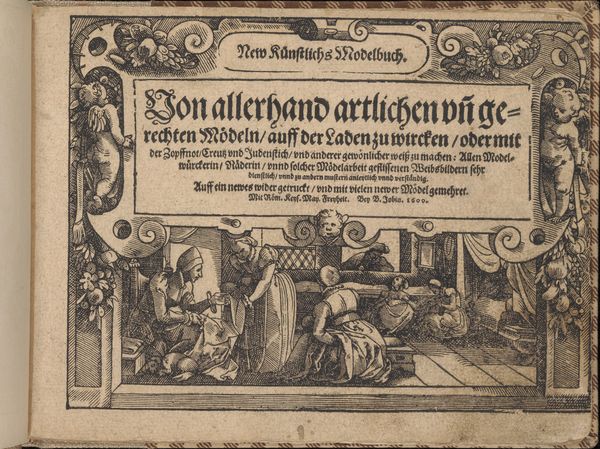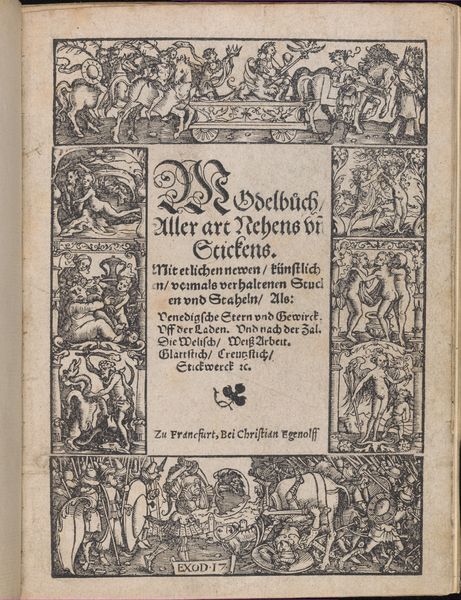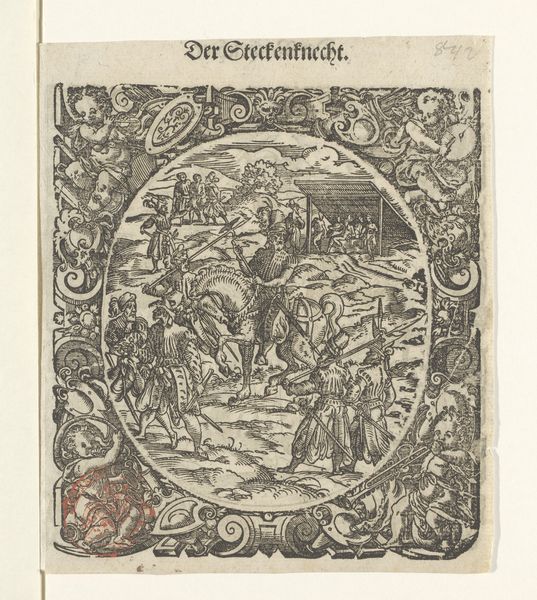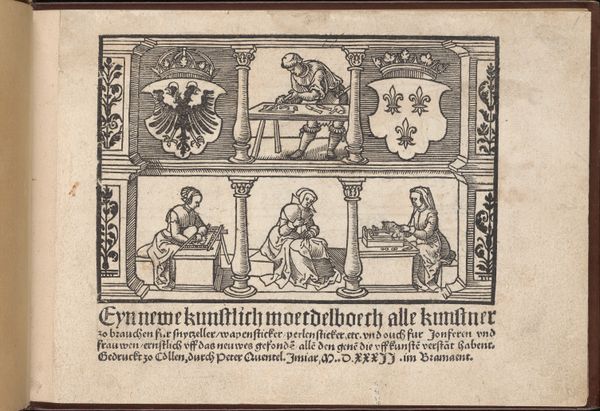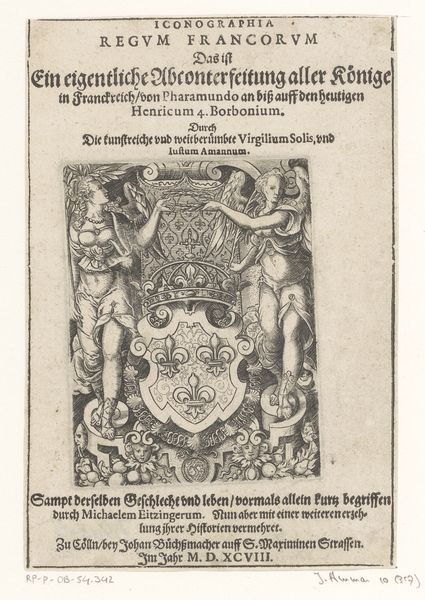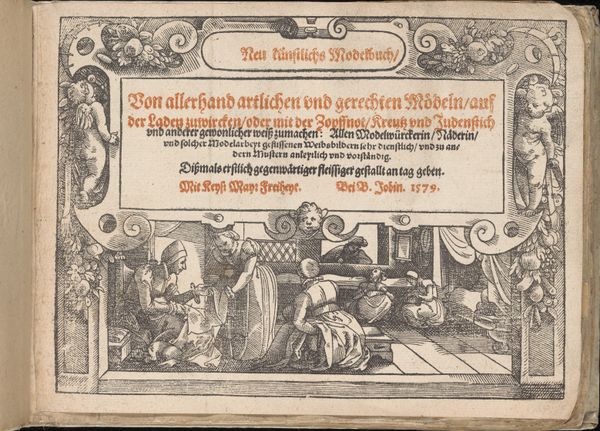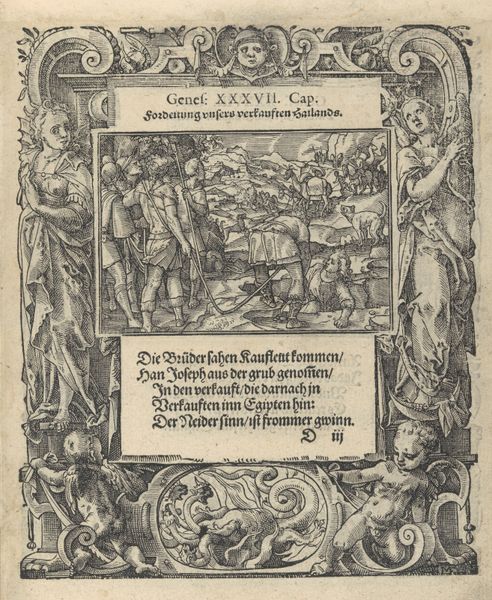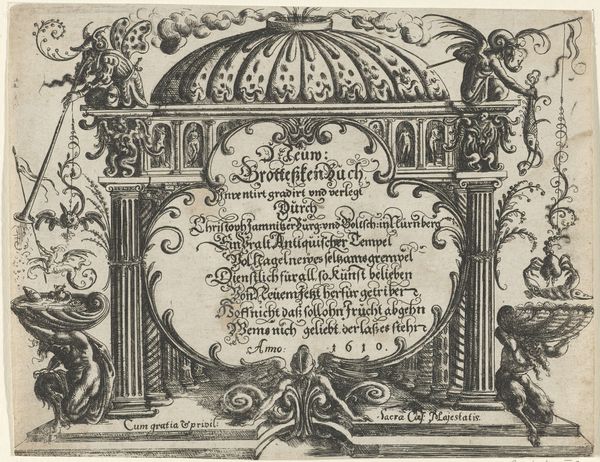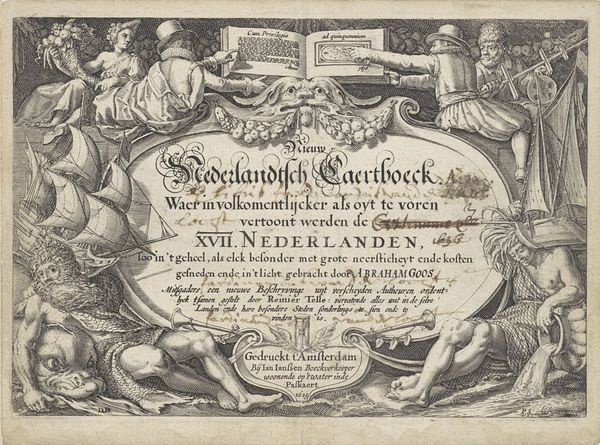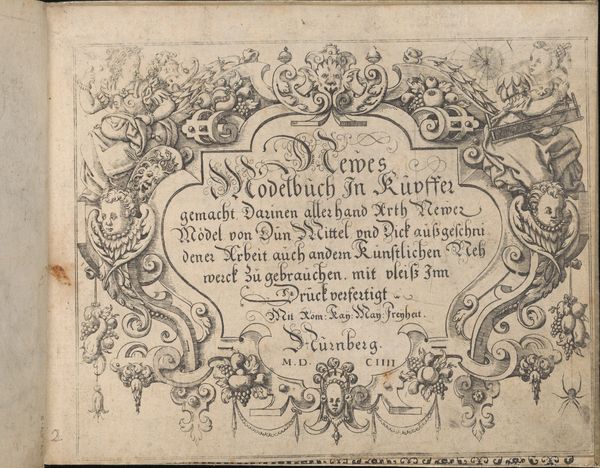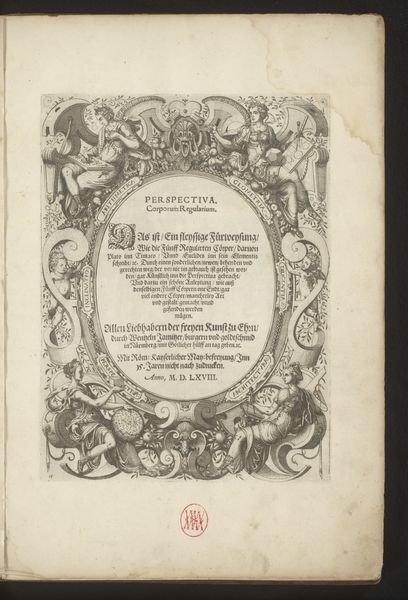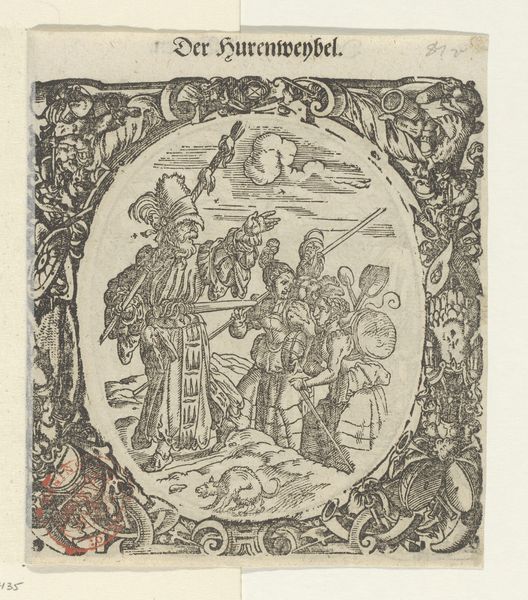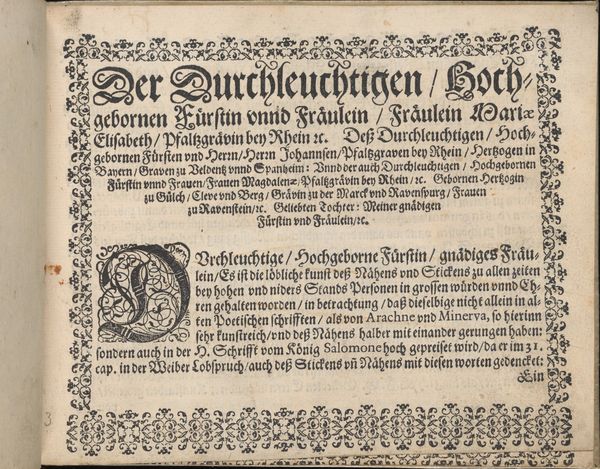
Gründtliche Beschreibung der freyen ritterlichen unnd adelichen Kunst des Fechtens in allerley gebreuchlichen Wehren mit vil schönen und nützlichen Figuren gezieret und fürgestellet (A Thorough Description of the Free Knightly and Noble Art of Fencing, in All the Typical Guards, Adorned and Arranged with Many Beautiful and Useful Figures) 1570
0:00
0:00
print, woodcut, engraving
# print
#
book
#
figuration
#
11_renaissance
#
woodcut
#
history-painting
#
armor
#
engraving
#
sword
Dimensions: 7 3/8 x 10 1/8 in. (18.7 x 25.7 cm)
Copyright: Public Domain
Joachim Meyer’s “A Thorough Description of the Free Knightly and Noble Art of Fencing,” made around 1570, is a woodcut printed on paper. It depicts the art of fencing, a martial practice undergoing significant change in Meyer’s time. Consider the material and the technique here. Woodcut printing was a relatively accessible medium, allowing for the wide dissemination of information. This speaks to a broader social context, where knowledge, even that previously exclusive to the knightly class, was becoming more democratized through print. The image itself is a testament to craft. The sharp lines and intricate details demonstrate the skill of the woodcutter. Look at the texture and depth achieved through careful carving. It’s a potent reminder that the production of images, like the practice of fencing itself, involved physical labor, skill, and the transmission of knowledge through practice. Meyer’s book was not just a manual, but a crafted object in its own right.
Comments
No comments
Be the first to comment and join the conversation on the ultimate creative platform.

